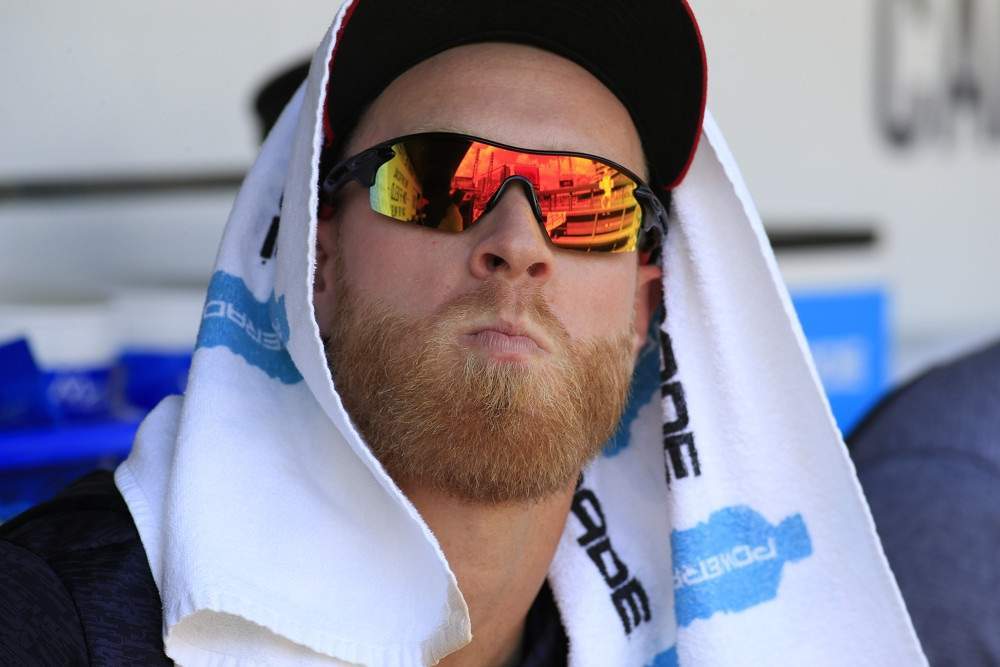
Continuing my offseason theme of profiling 2018’s surprise players, I’ll turn to Atlanta Braves starting pitcher Mike Foltynewicz. Like last week’s profiled player, Chicago Cubs infielder Javier Baez, Foltynewicz was a first-time All-Star in 2018, making good on his status as a top prospect from a few years ago. But was this an outlier season or the signifier of a late-20’s breakout? His numbers seem to indicate the former.
Mike Foltynewicz and his Perplexing Peripherals
Foltynewicz had a career-best season in 2018 in nearly every meaningful category. Innings? Check. Strikeout rate? Check. Ground ball rate? Check. ERA? Check. FIP? Check. He stayed healthy, he worked deeper into starts, and he stifled hitters as he never had before, holding his opponents to a career-best .194/.275/.324 slash. The only thing he didn’t do was cut back on the walks, but that’s not a problem so long as he runs an above-average strikeout rate and limits damage on balls in play, as his 2018 results show. But how much of that was real?
The most blatant statistical red flag is the .251 BABIP opposing hitters mustered against Foltynewicz, well below his .303 career mark. That’s an obvious area for regression in 2019. Among 128 starters with at least 100 innings last year, Foltynewicz’s opponents’ BABIP ranked eighth-lowest. A few more balls are probably going to drop in 2019. Still, might there be some signal here? Maybe Foltynewicz did get better at manipulating contact? There’s some evidence that this was indeed the case, but it’s hard to believe that it’s a sustainable skill.
Per Statcast, Foltynewicz’s expected weighted on-base average against (the results he “should have” given up) was a paltry .274, near his actual .265 opponents’ wOBA. In other words, Foltynewicz’s results seem to have been earned; this wasn’t a case of hitters getting unlucky, they just weren’t making quality contact. But there’s a catch. For one, pitchers’ xwOBA allowed hasn’t shown to be all that predictive year-to-year; there’s not a ton of evidence to show that a pitcher can reliably limit quality contact over time. What’s more, Foltynewicz allowed the highest average exit velocity- and most barreled up hits- of his career in 2018.
So how do we explain his stellar results? Line drives. Foltynewicz was a top 15 pitcher at preventing line drives in 2018, just a year removed from being in the bottom 15. Foltynewicz’s volatility goes to a more general point. Pitchers don’t seem to have a ton of control over whether they allow a lot of line drives. Beyond the Box Score’s Bill Petti found in 2012 that line drive rate showed one of the weakest correlations year-to-year of any pitching statistic. The leaderboards since then seem to confirm that this is still the case (ground-ball specialists, which Foltynewicz is not, do have some ability to limit line drives year-to-year by keeping the ball in the dirt, but more balanced pitchers do not).
It’s important to note that Foltynewicz himself has had scattered line drive rates across the past three years: 21%, 24%, 18%. There’s no reason to believe that he’s truly adept at avoiding lined contact; it seems instead that Foltynewicz simply benefitted from hitters barely missing an inordinate number of pitches in 2018.
This is not to say, though, that Foltynewicz didn’t improve at all. He obviously did. His strikeout rate proves it. He threw harder than ever before last year, helping him to narrowly set a career-high in swinging strike rate. Velocity is the single most important attribute a pitcher has, so Foltynewicz’s stock should be higher entering 2019 than it was a year ago. But I’m not sure it should be that much higher. Foltynewicz didn’t get hitters to chase pitches out of the strike zone any more often than he could in years past. He is coming off a career-low first-pitch strike rate, right around the league average, so it’s probably not about improved command. To buy Foltynewicz as a top-of-the-rotation starter requires putting a lot of stock into his ball-in-play success in 2018.
Early indications, though, are that fantasy owners are bullish on Foltynewicz. He’s coming off the board 23rd among starting pitchers, top 80 overall. In the aggregate, owners seem to be tiering Foltynewicz alongside Jose Berrios, German Marquez, and Miles Mikolas. David Price, Charlie Morton, Carlos Martinez, and Robbie Ray, all of whom have (at least) comparable stuff and superior track records, are coming off the board after Foltynewicz is.
Foltynewicz threw more innings last year than any of the quartet grouped below him, so he may feel safer to drafters. But I think it’s also likely that he’s simply worse than those other pitchers. Even Chris Archer projects for a higher strikeout rate and an ERA half a run below Foltynewicz’s next year. Archer’s coming off the board 65 picks later than Folty is.
I don’t mean to suggest that Foltynewicz is a bad pitcher. He’s the Braves’ best starter, and a solid No. 3 fantasy option. At the price it seems you must pay to draft Foltynewicz, though, I’d stay away. improved in 2018, but it seems more a marginal step than any launching pad to ace status.
